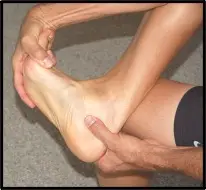In a standing position it is easier to maintain a natural spine alignment, compared to a seated position. This helps relieve pressure on the neck in particular. Standing also makes us more alert, speeds up our metabolism, makes it easier to breath and assists with the function of some body systems.
Conversely, standing still for prolonged periods may cause increased blood volume in the legs and overload the return of blood into our circulation, so it is important to pump the muscles of the legs to avoid this or take frequent rests in a seated position. Adjusting to standing for prolonged periods may take some time, so increase the standing time gradually so as not to cause fatigue in the legs. Spending half your time standing and half your time sitting works for most people, once they get use to standing.
Ergonomic checklist:
- Constant shift in leg position, even if it is minor. You might rest one foot up on a foot rest under the desk and then alternate. Sit if you feel fatigue;
- Stand upright with your hips, shoulders and ears vertically aligned;
- Beware of leaning on one leg or sticking one hip out to the side for a long time;
- Make sure your screen is perpendicular to your line of vision and the top of the screen is at eye level and positioned at an arm’s length from the body;
- When typing your wrist should be slightly lower than the level of your elbow;
- Keep the elbow close to the body and positioned underneath the shoulders;
- Position items on your desk as close as possible to avoid overreaching.




